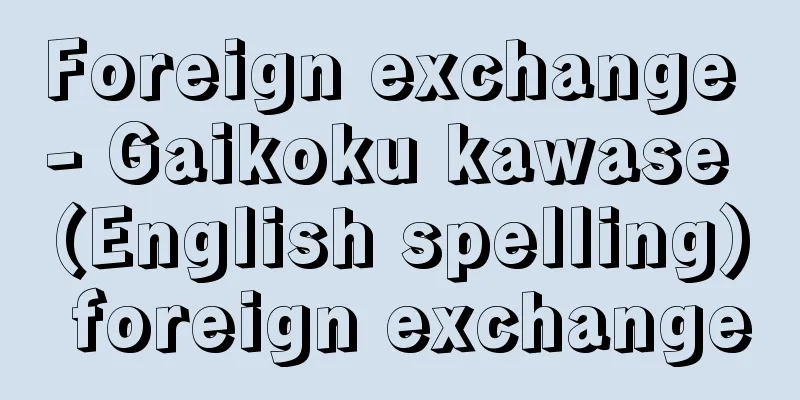Vajrapani Sutra - Kongouchogyo

|
A Buddhist scripture. Along with the Mahavairocana Sutra, it is one of the two major scriptures in Shingon Esoteric Buddhism, and together with the Susiddhi Sutra, it forms one of the three secret sutras. The Vajrasekhara Sutra is thought to have been created in Amaravati, southern India. The Vajrasekhara Sutra is not a single scripture, but a general term for several scriptures of the same lineage, both old and new. Of these, the Vajrasekhara Sutra, the first of the three, which was created early and determined the direction of the later Vajrasekhara Sutra in terms of content, is thought to have been created in Amaravati. This sutra explains the idea of the Vajrayana and is the basis of the Vajrayana Mandala, as opposed to the Womb Realm and Womb Realm Mandalas in the Mahavairocana Sutra. The Vajrayana Sutra was originally influenced by the Yogacara-Yindependence School, and while it is based on the triple mysteries of esoteric Buddhism (which holds that the actions of the Buddha's body, speech, and mind are miraculous and mysterious), and on the faith of Mahavairocana, it significantly developed the epistemological and practical aspects of esoteric Buddhism. The consistent feature of the Vajrayana Sutras is the attempt to grasp the "enlightened mind" (bodhicitta) established in the Mahavairocana Sutra epistemologically, concretely, and practically. Therefore, the stages of mind observation and meditation (contemplation) are explained in detail here. A discussion that could be called the Abhidharma of esoteric Buddhism unfolds. The creation of this sutra is thought to have had a long history, and it is said that there were four different versions, including an expanded version and an abbreviated version, and that the original version, which contains 18 sessions and 100,000 verses, was separated and transmitted to us today. The "Vajrasekhara Sutra" (first session) was introduced to China three times. The first person to translate it was Kongozhi of the Tang Dynasty ("Vajrasekhara Yoga Sutra: Omitted Recitation", 4 volumes). Later, it was Amoghavajra, a disciple of Kongozhi, who translated the "Vajrasekhara Sutra" and established the esoteric Buddhism world in China ("Vajrasekhara All Tathagata Truthful Entrance Mahayana Manifestation Samadhi Sutra", 3 volumes). Later, farther down the line, under the patronage of the Song dynasty, the Shinjitsushokyo (a translation of the first Vajrasekhara sutra) was completed. In addition, Hiromoto's Rishukyo is also considered to be of this type. [Kanaoka Hidetomo] Source: Shogakukan Encyclopedia Nipponica About Encyclopedia Nipponica Information | Legend |
|
仏教の経典。『大日経(だいにちきょう)』とともに真言密教における二大経典の一つで、さらに『蘇悉地(そしつじ)経』を加えて三部秘経とする。『金剛頂経』は南インドのアマラバティで成立したと考えられている。『金剛頂経』は単数の経典ではなく、新古いくつかの同系統の経典の総称である。このうち初期の成立で、かつ内容的にも後の『金剛頂経』の方向を決定した、初会(しょえ)の『金剛頂経』が、アマラバティの成立と考えられる。 この経は、金剛界の思想を説き、金剛界曼荼羅(まんだら)のもととなる経典で、『大日経』の胎蔵(たいぞう)界、胎蔵界曼荼羅に対する。『金剛頂経』はもと瑜伽行唯識(ゆがぎょうゆいしき)派の思想を受け、密教の三密思想(仏の身体、言語、心によって行われる行為は霊妙、不可思議な働きであるとするもの)、大日如来(にょらい)の信仰にたちながら、密教の認識論的、実践的側面を著しく発達させた。このように『金剛頂経』群の一貫した特色は、『大日経』で確立された「悟りの心」(菩提心(ぼだいしん))を認識論的に具体的に実践的に把捉(はそく)しようとする試みである。したがってここでは、心の観察、冥想(めいそう)(観法)の段階が、こと細かに展開される。密教の阿毘達磨(あびだつま)ともいうべき議論が繰り広げられる。 この経の成立には、長い歴史があったものと思われ、広本、略本4種があったともいわれ、そのうちの18会(え)10万頌(じゅ)の大本(だいほん)が分かれて今日伝わったともいわれる。『金剛頂経』(初会の)は前後3回中国に紹介された。最初にこれを翻訳したのは唐代の金剛智(こんごうち)である(『金剛頂瑜伽中略出念誦(りゃくしゅつねんじゅ)経』4巻)。こののち、金剛智の弟子として『金剛頂経』を翻訳し、中国の密教界を大成したのは、同時代の不空(ふくう)であった(『金剛頂一切如来真実摂(しょう)大乗現証三昧(ざんまい)大教王経』3巻)。その後、遠く下って宋(そう)代の施護によって『真実摂経(しんじつしょうきょう)』(初会の『金剛頂経』の翻訳)が完成された。このほか広本の『理趣経(りしゅきょう)』なども、その一種とする。 [金岡秀友] 出典 小学館 日本大百科全書(ニッポニカ)日本大百科全書(ニッポニカ)について 情報 | 凡例 |
Recommend
Pharynx - Intestine
It is part of the digestive tract, but also part ...
Welt (English spelling) Die Welt
A leading German newspaper. In 1946 after World Wa...
Things for sale - things for sale
A type of Kabuki dance. A group of works that depi...
Le Centaure (English)
…He died young in his hometown due to lung diseas...
Perelmann, EY (English spelling) PerelmannEY
…the father of the modern Hebrew revival. His rea...
Hedychium gardnerianum (English spelling) Hedychiumgardnerianum
… [Mitsuru Hotta]... From [Hanasukusha] …[Ichiro ...
Independently Circulated Rice - Jishuryutsuumai
This is rice that was distributed directly from fa...
Anne of Austria
Date of birth: September 22, 1601 Queen of France ...
Hokuriku Main Line - Hokuriku Main Line
The name of the track of West Japan Railway Compa...
Ixia paniculata (English name) Ixiapaniculata
…[Tora Saburo Kawabata]. … *Some of the terminolo...
Umm Kulthūm
1908‐75 Egyptian female singer. She learned tradit...
Urmia [Lake] - Urmia
A salt lake in northwestern Iran, Azerbaijan. Also...
Newgrange
…Irish art began with the Neolithic megaliths tha...
Asahara Tameyori - Asahara Tameyori
Year of death: 3/3/9 (1290.4.19) Year of birth: un...
Osiris
…His aim was to study the history of science from...









